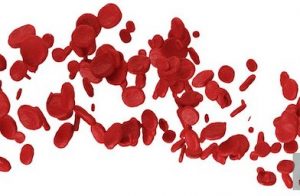Bone Marrow Behaviour In Space Explorers
 Bone marrow supports red and white blood cell production. In space, its structure and function begin to shift. Gravity influences bone marrow on Earth. Without gravity, its performance changes. Space explorers must manage these changes to stay healthy. Bone marrow becomes a priority during long missions.
Bone marrow supports red and white blood cell production. In space, its structure and function begin to shift. Gravity influences bone marrow on Earth. Without gravity, its performance changes. Space explorers must manage these changes to stay healthy. Bone marrow becomes a priority during long missions.
How microgravity affects bone marrow
In space, gravity no longer pulls blood downward. Fluids move toward the upper body. This impacts bone health and pressure balance. Bone marrow experiences less pressure than on Earth. That leads to reduced stimulation. As a result, blood cell production may slow. This slows recovery and immunity.
Bone loss linked with marrow decline
Bones support the body and protect marrow inside. In space, bone density begins to drop. When bones weaken, marrow weakens too. Bone marrow needs a strong structure. Without it, cell production drops. This can cause fewer red cells. It may also reduce oxygen delivery to organs.
Bone marrow and immune system changes
White blood cells come from bone marrow. In space, fewer white cells are made. This weakens immune defense. Space explorers must stay healthy. Reduced white cells mean slower response to infections. Bone marrow must recover quickly during missions. Scientists watch this process closely during each flight.
Space radiation impacts marrow directly
Radiation in space penetrates spacecraft. It can harm living cells. Bone marrow contains sensitive cells. Radiation can damage them quickly. This weakens the ability to make new blood cells. Red cells, white cells, and platelets may all be reduced. Therefore, radiation protection remains a top mission priority.
Marrow fat increases in low gravity
Marrow contains both blood cells and fat. On Earth, balance is kept stable. In space, this balance changes. Fat in the marrow increases. Blood cell production then declines. This shift affects immune strength. Fat takes space that cells once used. Scientists track this change throughout each mission.
Exercise protects marrow during missions
Daily movement keeps bones strong. Weight-bearing exercises stimulate marrow. Space explorers use treadmills and resistance bands. These tools replace Earth’s gravity. Physical activity helps support marrow health. More motion means stronger bones. Strong bones support better cell production. Exercise remains part of every daily space routine.
Bone marrow storage and recovery planning
Scientists prepare for blood shortages. They explore storing marrow or stem cells. These can help with recovery. Backup samples may travel with crews. If needed, stored samples support cell production. This improves survival rates during longer space trips. Such steps help ensure safe travel far from Earth.
Nutrition and marrow health connection
Food supports cell growth. Bone marrow needs vitamins, iron, and protein. Space menus are balanced for this need. Foods rich in nutrients help bone marrow function. Space explorers eat carefully planned meals. Supplements may also be used. These steps help marrow perform during and after missions.
How aging affects marrow in space
Older explorers face more risk. Their marrow already makes fewer cells. Space increases this decline. Age-related changes increase quickly in space. Bone density drops faster. Marrow response slows further. That increases weakness and fatigue. Space programs track age closely. Health limits are set for long flights.
Stem cells in marrow and recovery
Marrow contains stem cells. These cells create red, white, and platelet cells. In space, stem cells behave differently. Some divide slower. Others lose strength. This reduces healing. Wounds take longer to close. Infections linger. Monitoring stem cell behavior helps protect space explorers during extended flights.
Monitoring marrow with blood tests
Crew members provide regular blood samples. These tests show red and white cell levels. Any drops raise concern. Early action prevents major issues. Blood test results travel back to Earth. Doctors monitor marrow function remotely. They adjust food, rest, and medicine based on these results.
How space sleep cycles affect marrow
Sleep affects the body clock. The body clock helps marrow know when to make cells. Space changes sleep rhythms. Without night and day, sleep can become irregular. This may confuse cell cycles. Marrow responds slower to needs. Sleep aids help support marrow activity on missions.
Psychological stress weakens blood production
Isolation increases emotional stress. Stress affects hormone levels. Hormones guide bone marrow actions. If stress rises, cell production may fall. Less serotonin can mean weaker marrow. Mental support helps keep systems stable. Crew members train for emotional strength. That helps protect bone marrow and health.
Spacecraft design protects marrow health
Radiation shielding surrounds the spacecraft. Layers of metal and plastic block harmful rays. These protect skin and internal organs. They also protect bone marrow. Radiation sensors track levels in real time. Spacecraft move when radiation spikes. This reduces the damage done to marrow-producing bones.
Long missions increase marrow stress
Short trips show minor marrow shifts. Long trips show deeper marrow decline. As time grows, blood loss increases. Immunity stays lower. Recovery becomes slower. Fatigue grows stronger. Researchers watch long missions closely. They record every marrow change. These records improve safety for future missions.
How gravity recovery helps after landing
When space explorers return to Earth, gravity returns too. Marrow responds slowly at first. Cells increase again. Bone density improves. Exercise continues on Earth. Recovery plans support marrow function. Doctors track healing rates. Full recovery takes time. Each flight teaches more about this process.
Artificial gravity may help in future
New ships may spin to mimic gravity. This keeps pressure on bones. That helps marrow stay active. Simulated gravity may reduce marrow loss. Exercise would become more effective. Blood cell production may stay stable. This plan may help with long Mars trips. Engineers test these systems now.
Marrow studies benefit earth too
Bone marrow research in space helps those on Earth. Cancer patients lose marrow cells. So do people with immune disease. Space marrow science brings new tools. New treatments improve on Earth. Space health knowledge helps everyone. Blood cell therapy advances with every mission flown.
Global teams study bone marrow changes
Experts from many countries track space health. They share data on marrow decline. Shared labs run tests. Marrow samples are frozen and studied. Collaboration improves mission safety. It also helps young explorers train. Teams keep learning as missions grow longer and more complex.
Hydration keeps cells strong and active
Water supports blood flow. Blood carries oxygen to marrow. Dehydration weakens this flow. Space explorers drink carefully. Water intake is tracked daily. This supports marrow and energy. Thirst may feel different in space. Alerts and sensors remind the crew to drink often and stay hydrated.
Marrow behavior in different body areas
Bone marrow sits inside many bones. Legs, hips, ribs, and spine all contain marrow. Microgravity affects each bone differently. Some areas lose cells faster. Others keep producing longer. Scientists scan all bones. These scans show which marrow regions remain strong. Adjustments follow based on these findings.
How movement spreads marrow recovery
Stretching and walking help send signals. Muscles push on bones. Bones respond by sending nutrients to marrow. This process boosts recovery. Movement becomes medicine in space. Small shifts in posture make a big difference. Therefore, astronauts practice daily motion drills even in limited cabin areas.
Every mission brings more marrow answers
Marrow remains a puzzle. Yet each mission reveals more. Spaceflight offers fresh insight into cell life. Human health adapts in many ways. Blood cell loss becomes a concern. So does marrow recovery. Space explorers now train better. Their health supports deep space exploration in the future.
Courage flows from deep within bones
Marrow supports life from inside the bones. In space, its strength is tested. Yet it continues to adapt. Space explorers show how the human body can bend without breaking. Their journey reveals how inner strength, from marrow to mind, powers the future of space travel.









